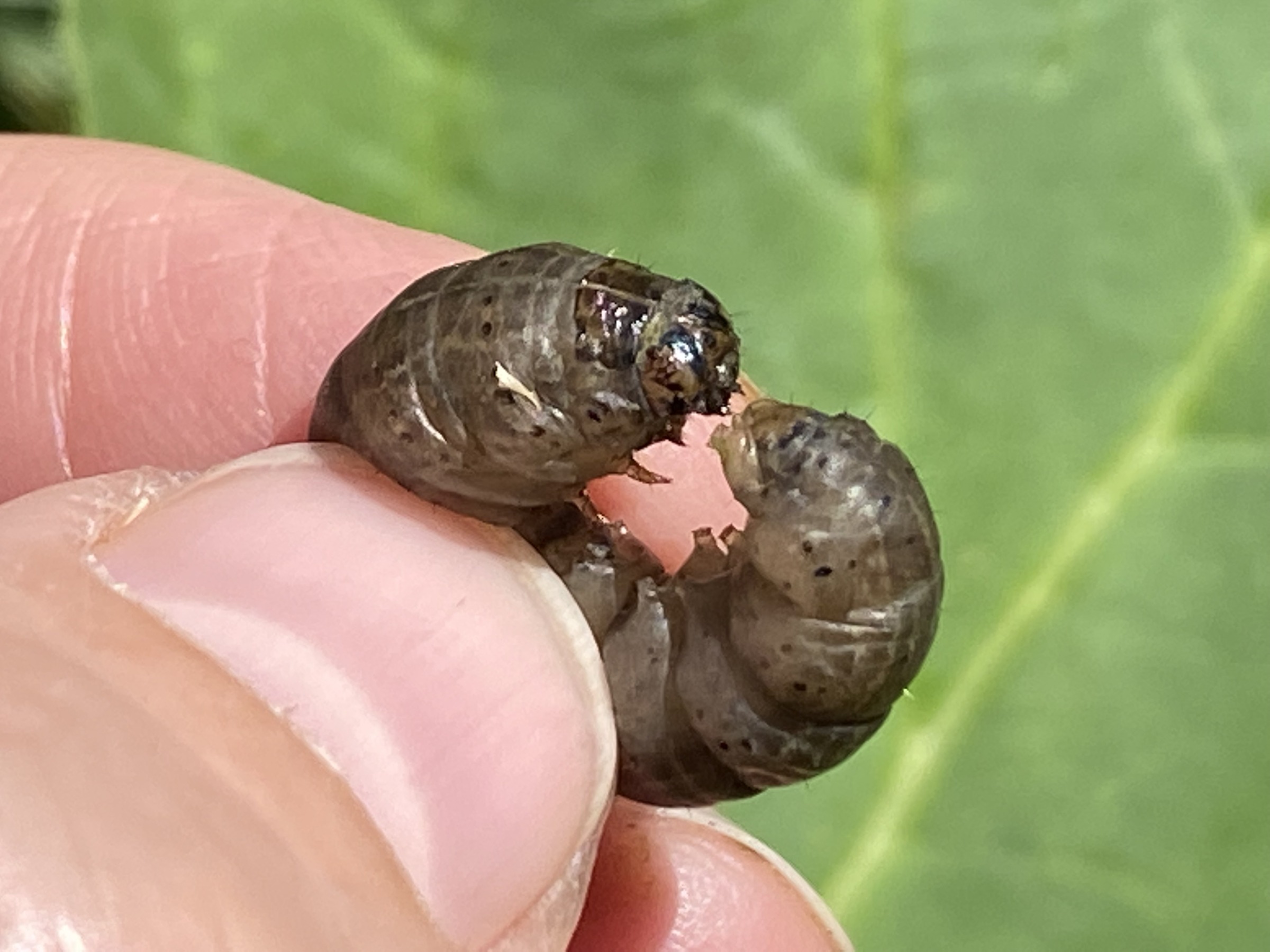It’s time to scout your corn fields for black cutworm!
The primary black cutworm damage window is projected to begin May 21st in the southern and central regions of Wisconsin and June 1st in the Northern region.
Small black cutworm larvae feed on weedy plant hosts and corn leaves. Fourth instar and larger larvae can cut corn plants below ground, reducing stand counts and yield potential.

Photo of black cutworm larva (Krista Hamilton, DATCP)

Scouting
Walk a W-shaped pattern in the field. Count five sets of 50 consecutive plants (250 total plants) and record the number of damaged plants.
Ideally, attempt to collect two larvae to confirm identification and determine the instar (stage). The instar indicates how long the BCW larva will continue to feed and cause damage in the field.
Scout susceptible fields frequently. Mark off defined field areas and check for two to three weeks after corn emergence or until the V5 stage, at which point the plants are usually large enough to withstand BCW feeding.
Monitor the plant stand, number of cut plants, and visible feeding damage.
Treatment Threshold
The treatment threshold for black cutworm is when 2-5% of corn plants have been cut. This means an intervention is warranted if five to 12 of the 250 scouted plants are cut.
Treatment thresholds are not based on moth flights. DATCP’s Black Cutworm Monitoring Network provides updates on black cutworm moth migration and captures across the state. This information is used to determine the arrival of black cutworm in Wisconsin and to forecast the optimal time to scout for larvae.
Integrated Pest Management Strategies
Control early-season weeds to reduce the attractiveness of fields to egg-laying female moths. Beneficial insects, birds and mammals feed on black cutworm larvae. Parasites also control black cutworm larvae. Chemical control may be warranted if damage exceeds the threshold of 2-5% cut corn plants. Insecticides should not be applied as a “preventative approach.” Find more information about management strategies in this black cutworm resource.
Additional Resources
Learn more about black cutworm with UW-Madison Extension’s Managing Black Cutworm in Wisconsin Corn Fields resource.
You can look at Degree Day models to help decide if there is a risk for black cutworm on Ag Weather.
Subscribe to the DATCP Pest Survey Program’s Field Notes newsletter for pest updates throughout the growing season.
If you found this information online, you can sign up for insect pest text alerts.





